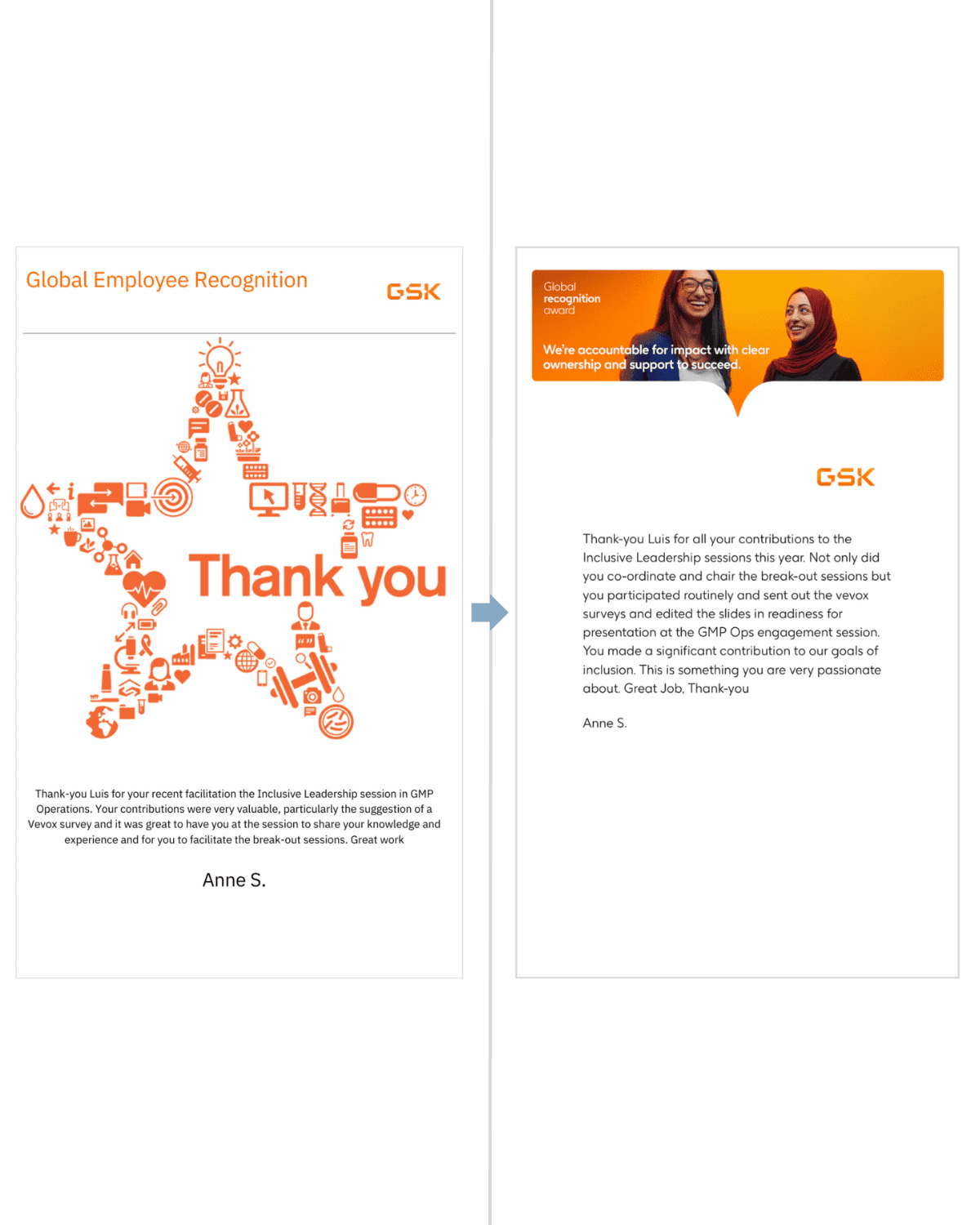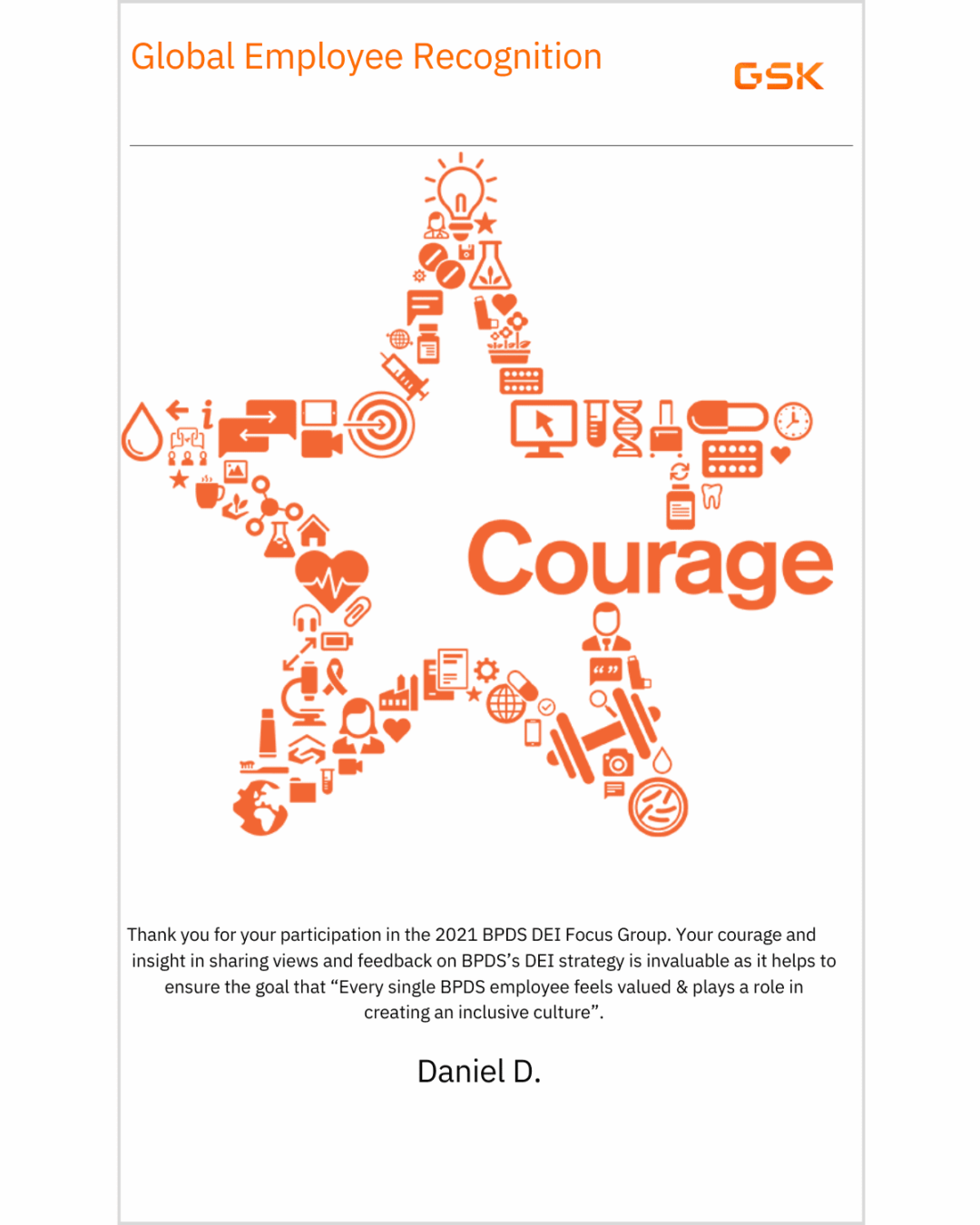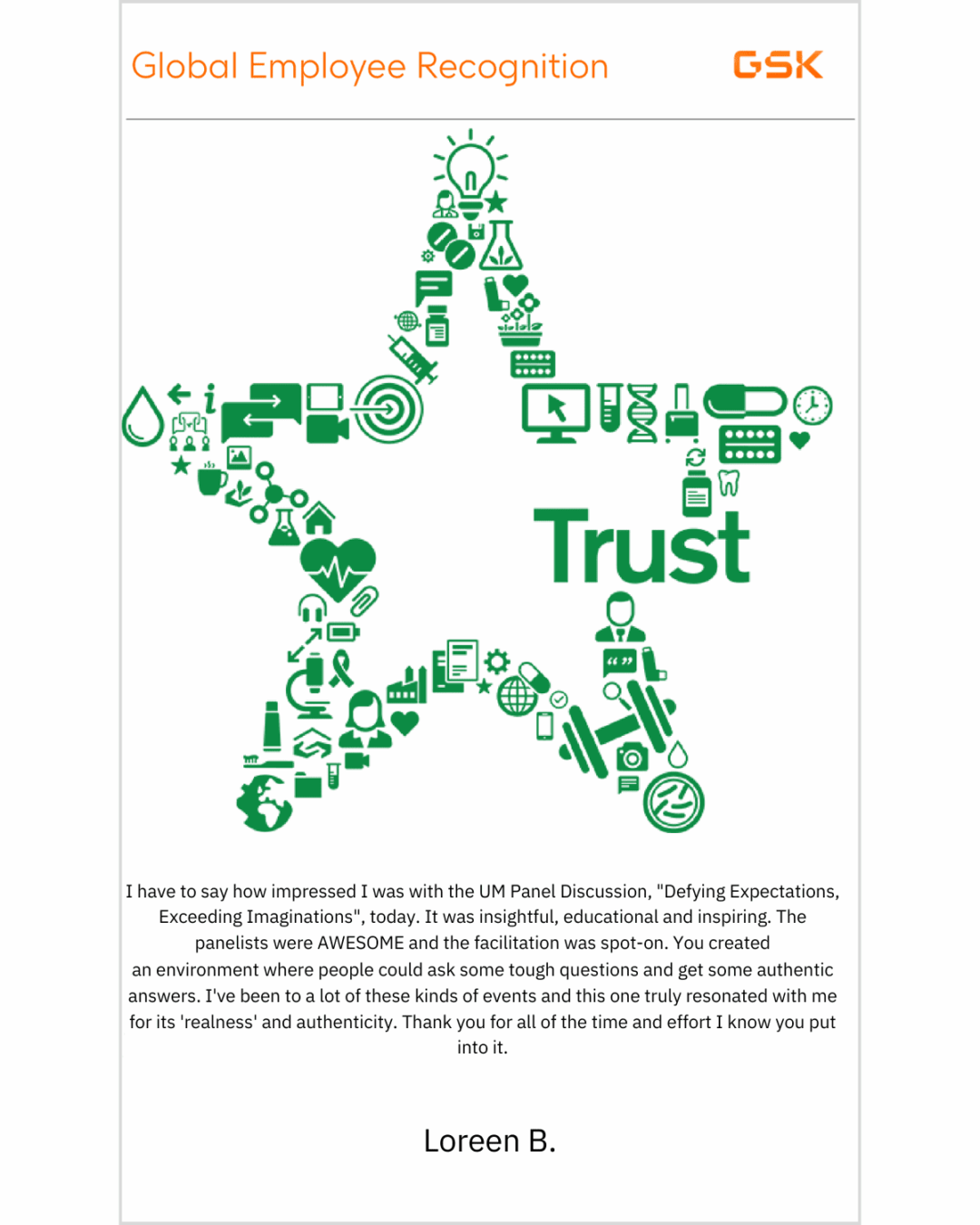
Anne S., Director - Scaling inclusion turns programs into culture.
Within GMP Operations, inclusive leadership began with piloting breakout sessions and interactive tools like Vevox surveys in 2021. By 2022, the program was coordinated, chaired, and data-informed — embedding inclusion into site-wide engagement and transforming it from one-off events into part of the culture.

Daniel D., Senior Director - Inclusive leadership means influencing strategy, not just teams.
During the BPDS DEI focus group, inclusive leadership came through in amplifying employee voices. Candid feedback exposed blind spots and led leaders to expand the Career Advocacy Program — shifting it from a senior-staff initiative into a pathway also supporting mid- and entry-level employees.

Antonio U., Senior Director - Inclusion matters in and outside companies.
Inclusive leadership bridged culture and community. Internally, contributions to the BPDS Inclusive Leadership workstream helped identify inclusive and exclusive behaviors that guided site-wide practice. Externally, mentoring underrepresented STEM students through the NIIMBL eXperience program demonstrated how personal storytelling and hands-on guidance can carry inclusion beyond one workplace.

Lamont T., Director - Inclusive leadership creates visibility and career momentum.
In 2020–2021, inclusive leadership meant opening doors for diverse candidates. Recruitment pipelines were strengthened through contributions to early hiring efforts, a joint SACNAS/GSK webinar, and external recruiting conferences. A mentoring program was also built into Diversity Interview Superday — pairing candidates with guidance, showcasing GSK’s culture, and supporting interviews — all helping expand diverse pipelines and elevate GSK’s DEI brand.

Loreen B., Director - Inclusive leaders make tough conversations safe.
At GSK’s “Defying Expectations” panel, inclusive leadership showed up through authenticity and openness. Employees felt safe raising difficult questions, trusting they would be met with respect and honest answers.
Arc A: Technical Excellence → Inclusive Leadership
Inclusive leadership is strongest when it’s built on credibility. Early in my career, I was recognized for delivering technical results under pressure in GMP and R&D. That foundation of trust opened doors into new opportunities — first through GSK’s Mosaic ERG, where I supported diverse recruitment efforts, and later in site-level inclusion events. Over time, those efforts scaled: I was invited by the SVP BPDS, to co-lead the Inclusive Leadership Workstream, where I helped create the “Top 10 Inclusive / Top 5 Exclusive Behaviors” guide shared site wide. What started as technical execution grew into cultural influence, demonstrating how credibility and inclusion reinforce each other.
Arc B: Local Recognition → Sponsorship → National Stage
Inclusive leadership creates visibility that compounds over time. It began with recognition from peers for contributions to Mosaic and Spectrum ERG initiatives and site-level diversity events. That visibility led to sponsorship from leaders like Lamont T., who, in his global Pharma R&D inclusion role with visibility into company-wide DEI strategy, supported my involvement in high-profile initiatives. Sponsorship, in turn, opened doors beyond GSK. I was invited twice to represent the company at SACNAS, a national STEM diversity conference, where I met first-generation and underrepresented students while helping strengthen recruitment pipelines. Alongside these broader opportunities, feedback from direct reports consistently reinforced the impact of building trust and psychological safety within teams — showing how inclusion mattered both in high-visibility spaces and in everyday leadership. The progression from ERG contribution to senior sponsorship, combined with advancing into a line leader role just three years into my corporate career, illustrates how inclusion builds career momentum.
Arc C: Building Others → Changing Systems
Those one-to-one and team-level impacts laid the foundation for broader influence. In the BPDS DEI focus group, I contributed feedback that helped expand the Career Advocacy Program — transforming it from a senior-only initiative into one that gave mid- and entry-level employees clearer pathways for advancement. Later, I was invited to join the Inclusive Leadership Workstream, where I helped convert employee feedback into the “Top 10 Inclusive / Top 5 Exclusive Behaviors” guide that was shared site-wide to spark reflection and culture change.
For someone still early in their corporate career, influencing talent strategy and shaping culture frameworks was unusual — but it showed how building others can evolve into shaping systems that outlast any one leader.
Inclusive leadership isn’t just about supporting individuals — it’s about creating systems that multiply opportunity and embed inclusion into the way organizations work.
